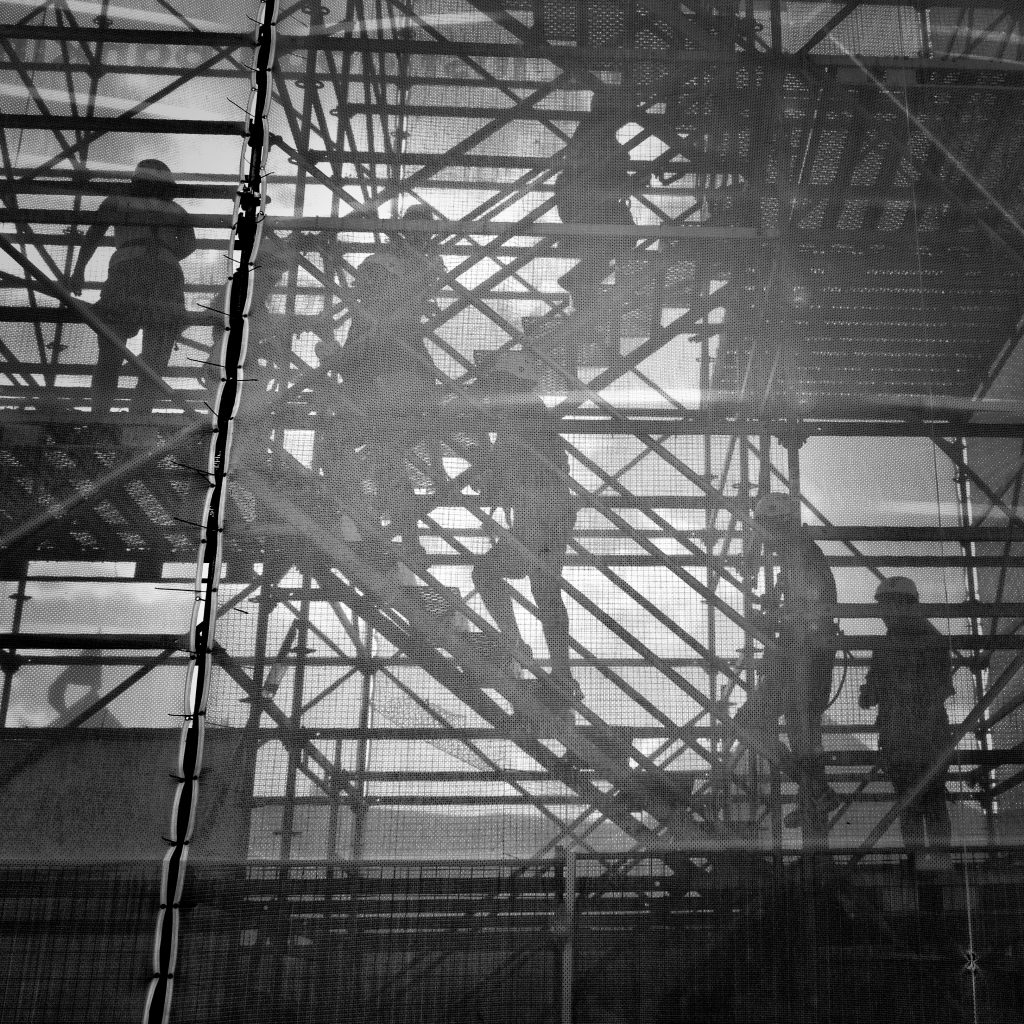According to Safe Work Australia, 35 workers’ compensation claims are made each day in the construction industry. It can be a dangerous and hazardous profession. That is why, at Solutions Built, it is important that our workers complete projects safely. All building companies must make sure their workers are following the safety protocols and rules put in place under the Work Health and Safety Act 2011. Here are our top safety protocols we follow to make our construction sites a safer place.
Properly Set and Secure Scaffolding
Poorly set up scaffolding can result in serious injuries, and sometimes, fatalities. According to the Work-Related Traumatic Injury Fatalities, Australia Report, there were 21 fatalities as a result of scaffolding between 2003 and 2015. It is a requirement for building companies to implement risk management systems to guarantee scaffold safety.
For optimum safety, builders must make sure the scaffolding is inspected both before and after use, checking the ground conditions and confirming that all nuts and bolts are secure. To prevent electrocutions, there should be a minimum clearance distance of 4 meters between metallic scaffolds and power lines. It is also important for scaffolding to be easily and safely accessible via stairs or ladders and to not exceed the scaffold’s maximum load-bearing capacity. If workers encounter structural issues with the scaffolding, repairs or maintenance need to be actioned immediately.
Take Care on Ladders and Stairs
In 2015, 15% of work-related injuries experienced in the construction industry were due to falls from a height. The majority of these injuries were either caused by ladders that were not long enough for the job, or on cluttered and slippery stairs.
While it is extremely common to find a ladder on a construction site, they are not always used correctly or safely. Building companies should provide all workers with the necessary training on how to handle and place a ladder as well as how to recognise potential ladder hazards. Different ladders are rated for different load capacities. When selecting the right one for the job, the weight of the worker, tools and materials should all be considered. A ladder must also be long enough for the worker to reach the desired area without overextending themselves. Similar to scaffolding, it is necessary to visually inspect the ladder for any structural damages or grease that could cause a slip.
Workers should also inspect stairs before stepping on them, and should be kept dry, clean and uncluttered to avoid any falls.
Use Personal Protective Equipment (PPE) When Needed
Personal protective equipment (PPE) is any clothing or equipment designed to be worn by workers for protection against potential injuries or illnesses. Equipment includes goggles, respirators, safety harness, hard hats and safety shoes. Work Safe Qld does state that using PPE is ranked as one of the least effective control measures, and should only be used in the following scenarios:
- as a last resort, where no other method is possible;
- as a short-term measure until a more effective control method can be used;
- together with other controls measures; and
- on its own during emergencies and maintenance activities.
Some instances do require the use of this protective equipment, for example, a worker should wear a respirator and skin protection items (i.e. gloves) to avoid chemicals being absorbed through the skin and lungs.
Stay Clear of Machine Operating Areas
A common occurrence in construction is for workers to congregate and watch others do their job. This can be a safety issue – most commonly if workers are congregating around large pieces of machinery. Ideally, the area surrounding machine operation areas should be kept clear in case of accidental injury. If you are operating a machine, make sure other workers are as far away from the area as possible, especially when working in confined spaces. The operator should also communicate with a spotter to help keep your blind spots clear. When moving or driving the machinery, use the horn the warn people to stay clear of the area.
Look for Building Companies for Your Upcoming Project?
If you’re looking for commercial and residential building companies who exercise proper safety precautions during construction, choose Solutions Built. Our focus is to work on projects as efficiently and safely as possible. Contact us to speak to someone from our team.
